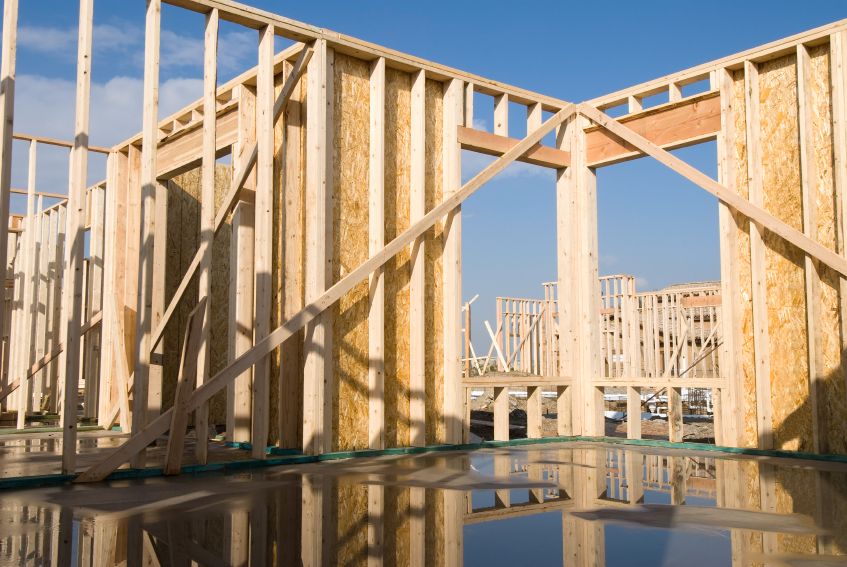 |
It’s a Small Project—Do You Need a Stormwater Discharge Permit?
The operator of a small construction activity site is required to obtain coverage under a stormwater discharge permit if:
- The construction project will disturb more than 1 acre but fewer than 5 acres.
- The construction project will disturb less than 1 acre of land but is part of a larger common plan of development or sale that will disturb a total of more than 1 acre but fewer than 5 acres of land.
- Construction projects disturbing less than 1 acre that the U.S. Environmental Protection Agency (EPA) or the state agency has determined will contribute to a violation of a water quality standard or will make a significant contribution of pollutants to nearby waters.
The approach and BMPs used for controlling pollutants in stormwater discharges from small construction sites may vary from those used for large sites since their characteristics can differ in many ways. For example, operators of small sites may have limited access to qualified design personnel and technical information. Also, small sites may have less space for installing and maintaining certain BMPs.
Join us for the Mitigating EHS Risks in Construction webinar on July 2 to learn how to perform a formal risk assessment of your construction project. Learn more.
11 Practical and Effective BMPs for Small Construction Activities
According to the EPA, the following practices have shown to be efficient, cost-effective, and versatile for small construction site operators to implement. The BMPs are divided into two categories: nonstructural and structural.
Nonstructural BMPs
- Minimize disturbances, including clearings and the amount of exposed soil.
- Preserve natural vegetation, by initially identifying trees and other natural vegetation, and make sure they are not disturbed during construction.
- Maintain good housekeeping practices, including:
- Designate a waste collection area on the site that does not receive a substantial amount of runoff from upland areas and does not drain directly to a water body.
- Make sure that containers have lids so they can be covered before periods of rain, and keep containers in a covered area whenever possible.
- Schedule waste collection to prevent the containers from overfilling.
- Clean up spills immediately.
Mitigating EHS Risks in Construction: How to Maintain Optimal Operations
Our presenter, a seasoned EHS consultant, will teach you how to document any identified risks, determine the protective measures and safeguards implemented to mitigate them and the residual risks remaining once these mitigation methods are deployed. Register now!
Structural BMPs
Practical structural BMPs for small construction activities fall under erosion controls and sediment controls.
Erosion Controls
- Mulching is often used in areas where vegetation cannot be established. Mulching can provide immediate and inexpensive erosion control. On steep slopes and critical areas, such as those near waterways, use mulch matting with netting or anchoring to hold it in place. Use mulches on seeded and planted areas where slopes are steeper than 2:1 or where sensitive seedlings require insulation from extreme temperatures or moisture retention.
- Seeding is well-suited in areas where permanent, long-lived vegetative cover is the most practical or most effective method of stabilizing the soil. Use seeding on roughly graded areas that will not be regraded for at least a year.
- Cover and seed all dirt stockpiles.
Sediment Controls
- Analyze the construction site’s contours to determine the proper placement of silt fences. Inspect and maintain silt fences after rainstorms.
- Use rock or other appropriate material to cover the storm drain inlet to filter out trash and debris. Make sure the rock size is appropriate (usually 1 to 2 inches in diameter). If you use inlet filters, maintain them regularly.
- Check dams are effective in small channels with a contributing drainage area of 2 to 10 acres. Check dams are temporary measures used in swales or channels where it is impractical to implement other flow-control practices (such as lining the channel).
- Stabilize construction entrances by removing mud and dirt from the tires of construction vehicles before they enter a paved roadway; properly sizing entrance BMPs for all anticipated vehicles; and making sure that the construction entrance does not become buried in soil.
- Sediment traps can simplify stormwater management on a construction site by trapping small amounts of sediment at multiple spots. Note the natural drainage patterns, and place the traps in areas with the highest erosion potential. Design alternative diversion pathways to accommodate potential overflows.
